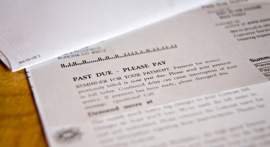
Understanding The National Debt Relief Program

What is the National Debt Relief Program?
The National debt Relief Program is a broad term used to describe the efforts of the United States Federal Government to reduce the nation’s mounting public debt. The ability to reduce debt is enacted through the elimination of fraudulent or frivolous spending habits enacted by governing bodies of the nation.
The National Debt Relief Program consists of numerous endeavors instituted by the United States Federal Government to help mitigate debt in the local and private sectors. Throughout the nation, millions of consumers are finding it increasingly difficult to meet their financial obligations.
Furthermore, as mortgage interest rates rise, the coordinating Adjustable Rate Mortgage Payments skyrocket. When this occurs the typical consumer will face other mounting debts, such as those attached to car payments, insurance premiums and credit card bills.
To mitigate the stranglehold of such debts, the United States Federal Government and their coordinating local governments have instituted a series of debt relief programs to offer temporary funding and alleviation of such debts.
In addition to alleviating the typical consumer’s debts, the United States Government has instituted various acts and legislation to appease the mounting national public debt.
As stated before, these programs, tied into the National Debt Relief Program, are aimed to bring greater efficiency to federal spending habits. The following acts were passed by the United States Congress to help reduce the National Debt.
The American Recovery Act:
The American Recovery Act, also known as the American Reinvestment and Recovery Act of 2009, was signed into law by President Barack Obama in February of 2009. This piece of legislation was fundamental in sustaining big banks and federal institutions in the United States through the delivery of government funding.
The American Recovery Act was a large-scale stimulus program that provided over $700 billion of federal funding to needy recipients, such as giant banks who fell victim to their own frivolous lending and investing habits. While this funding was primarily given to corporations, the Act itself was designed to help individuals find employment and recover from their mounting debts.
EDA Recovery Act Funding
This piece of the National Debt Relief Program was a component of the previously-mentioned American Recovery Act. This grant specifically offered funding to communities and individuals that experienced sudden and severe economic dislocation and job loss as a result of corporate restructuring and the general collapse of the American economy.
While not specifically aimed to spark a reduction of debt reduction, the EDA Recovery Act was a means to provide financing to non-profit organizations and those communities stricken with financial problems.
The Minority Business Enterprise Center Grant:
This example of the National Debt Relief Program was a source of funding that helped subsidize non-profit organizations with minority leadership. This grant, in essence, was not a form of direct debt relief, but instead, aimed to support struggling businesses and sole proprietorships.
Individuals who received this grant used the money to reduce business loans and lines of credit; this form of the National Debt Relief Program aimed to free up capital to allow businesses to reinvest in research and development initiatives.



















